What is snow mold? Expert advice to prevent and treat a winter lawn issue that could be hiding out of view
There may be a nasty secret concealed under the snow that is damaging your precious lawn
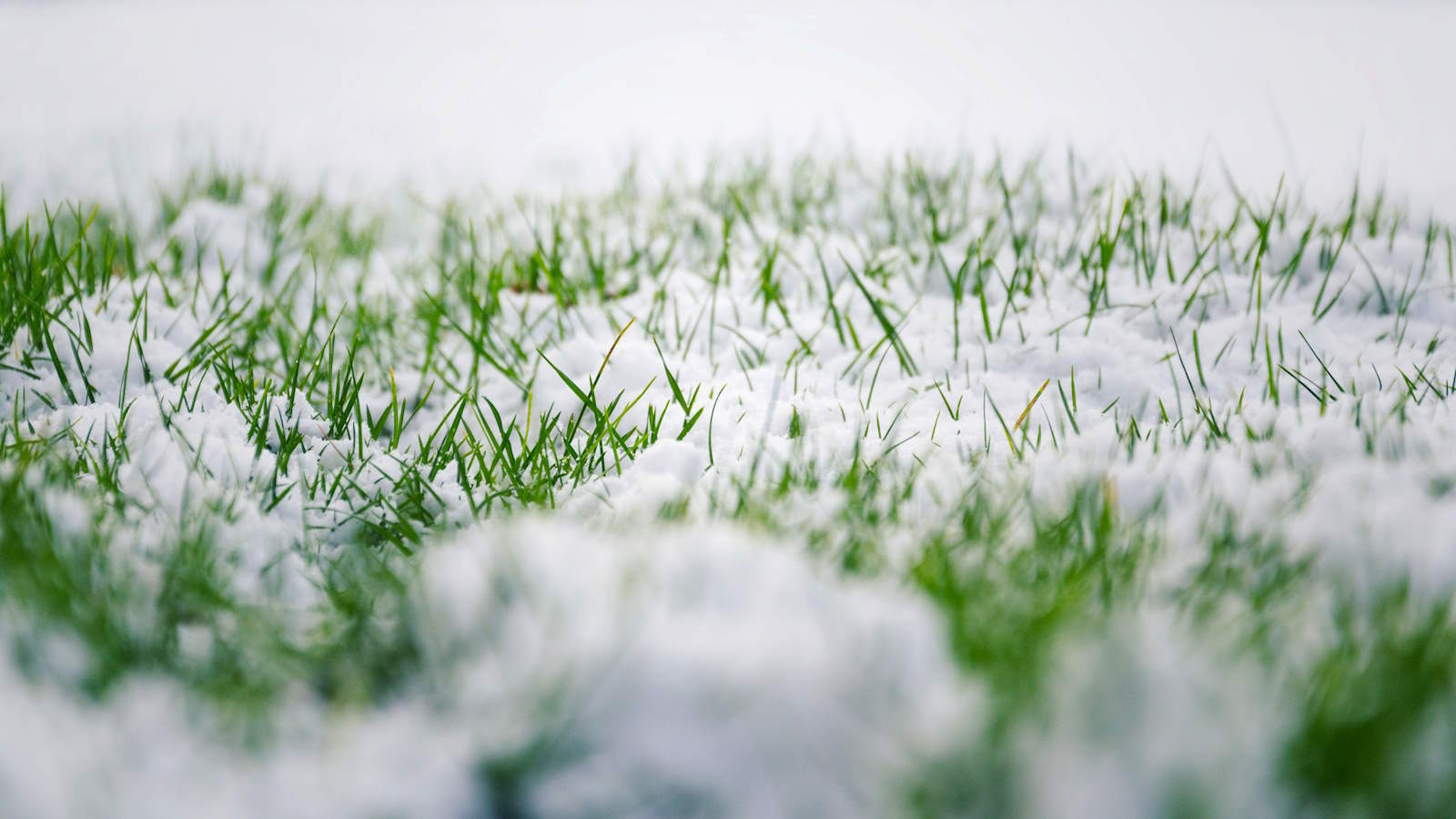

Snow mold is a fungal problem that hits lawns in cold weather. It gets its name due to its tendency to develop underneath a layer of snow on top of the lawn, and only appears when the snow starts to melt.
It is a common lawn disease that can infect any grass, and is caused by a lack of air circulation and the damp environment that exists under the cover of snow or wet leaves. It will show as patches of matted and dying grass once the snow thaws, but it is easily treatable.
Thankfully, good lawn care practices are also a great preventative tool against the problem. We take a closer look at the symptoms of snow mold and what can be done to prevent or treat it as part of your winter lawn care.

Snow mold is caused by a fungus active during cold weather
What is snow mold?
There are two culprits when it comes to snow mold. Pink snow mold is known as Microdochium patch, also commonly known as fusarium patch, while gray snow mold is also called Typhula blight. While gray snow mold only usually affects the grass blades, pink snow mold has the potential to kill the crown and the roots of grass.
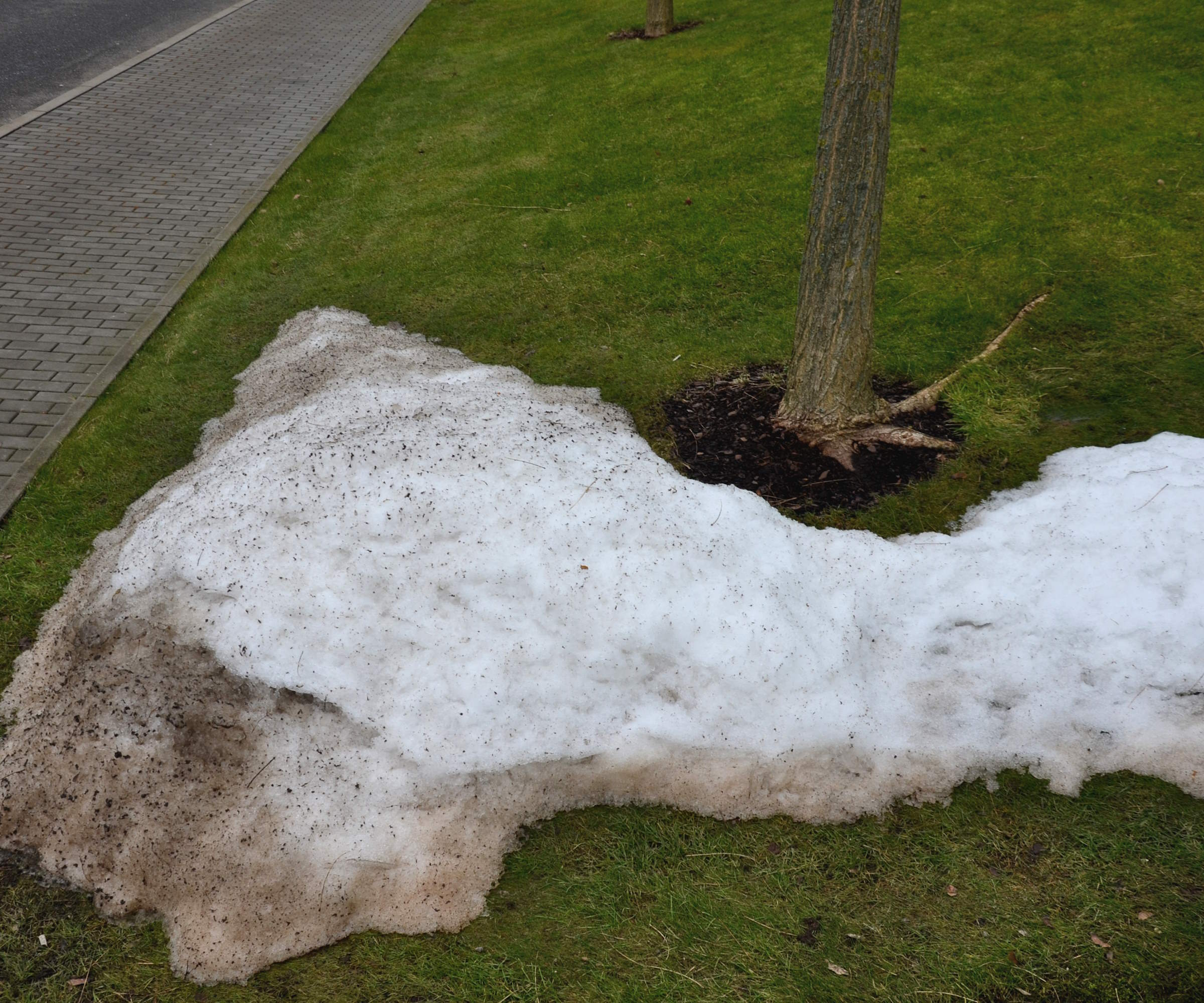
Snow mold damage shows itself once the snow thaws
What does snow mold on grass look like?
As mentioned earlier, it is likely you will not notice any symptoms of snow mold until the snow has thawed. While snow does not always damage a lawn itself, it can hide a nasty secret underneath that starts to show when the temperatures rise.
‘Telltale warning signs to look out for during the colder weather would be the mold presenting in a fluffy, strand-like form akin to the texture of cotton wool or spider webs,’ says Chrissie Handley, Lawn Care Specialist for Online Turf. ‘As the snow starts to thaw and you begin to prepare your lawn for spring, you'll start to see areas or rough circles of browning where the grass has been smothered and died.’
These patches of dying grass can measure anywhere from a few inches to several feet wide, and they will be matted and discolored. The coloring reveals what type of snow mold you are dealing with. Gray snow mold will have gray or white coloring, while pink snow mold is evident as being more pink or white in color.
Any type of grass is susceptible to snow mold. Mark Marino, the owner of Lawn Phix in Massachusetts, says that gray snow mold is ‘the most common type of snow mold seen in residential lawns’, while pink snow mold often impacts turf such as creeping bentgrass that is commonly seen on golf courses rather than home lawns.

Chrissie Handley is Lawn Care Specialist providing tailored advice on laying, maintenance and general lawn care for Online Turf.
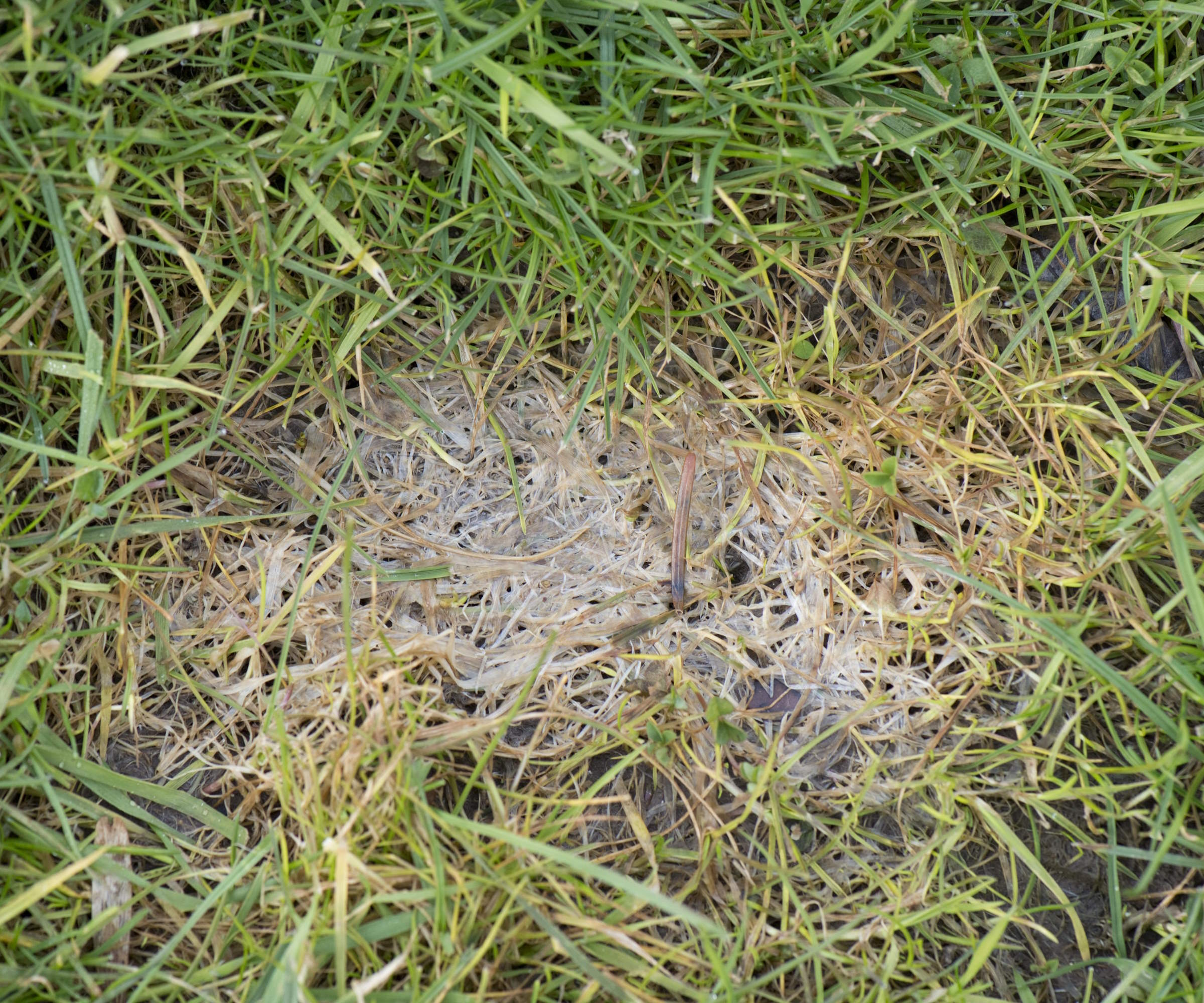
Dead or dying patches of grass appear on the lawn
How to prevent snow mold on lawns
Good maintenance and fall lawn care can help to actively prevent snow mold becoming an issue. Preparing in advance to winterize the lawn can help the lawn look lush throughout fall and also boost the chances of it getting through the colder months unscathed.
This includes giving a final mow before winter to reduce the length of the lawn before the frosts arrive, as longer grass can encourage the onset of mold as the airflow is restricted when the long stems are covered with snow.
Dethatching a lawn also removes dead material that can be a breeding ground for snow mold, and aeration can help to boost the drainage and air circulation through the lawn. Chrissie Handley also adds: ‘You should rake the lawn often to prevent leaves and debris from piling up and, if possible, try and clear snow off the grass during periods of heavy snowfall.’
If you do feed a lawn in fall, make sure to use specific winter lawn fertilizer that is slow-release, such as Scotts Turf Builder WinterGuard available at Amazon, rather than a summer feed that is very high in nitrogen.
Mark Tappan, agronomist for Simple Lawn Solutions, recommends: ‘A fall potassium application is critical as potassium plays a significant role in strengthening the plant prior to dormancy and preventing diseases.’
A preventative treatment of fungicide in fall can help if you have had snow mold issues before. Using a product such as Scotts DiseaseEx Lawn Fungicide, available at Amazon, can help prevent issues returning.
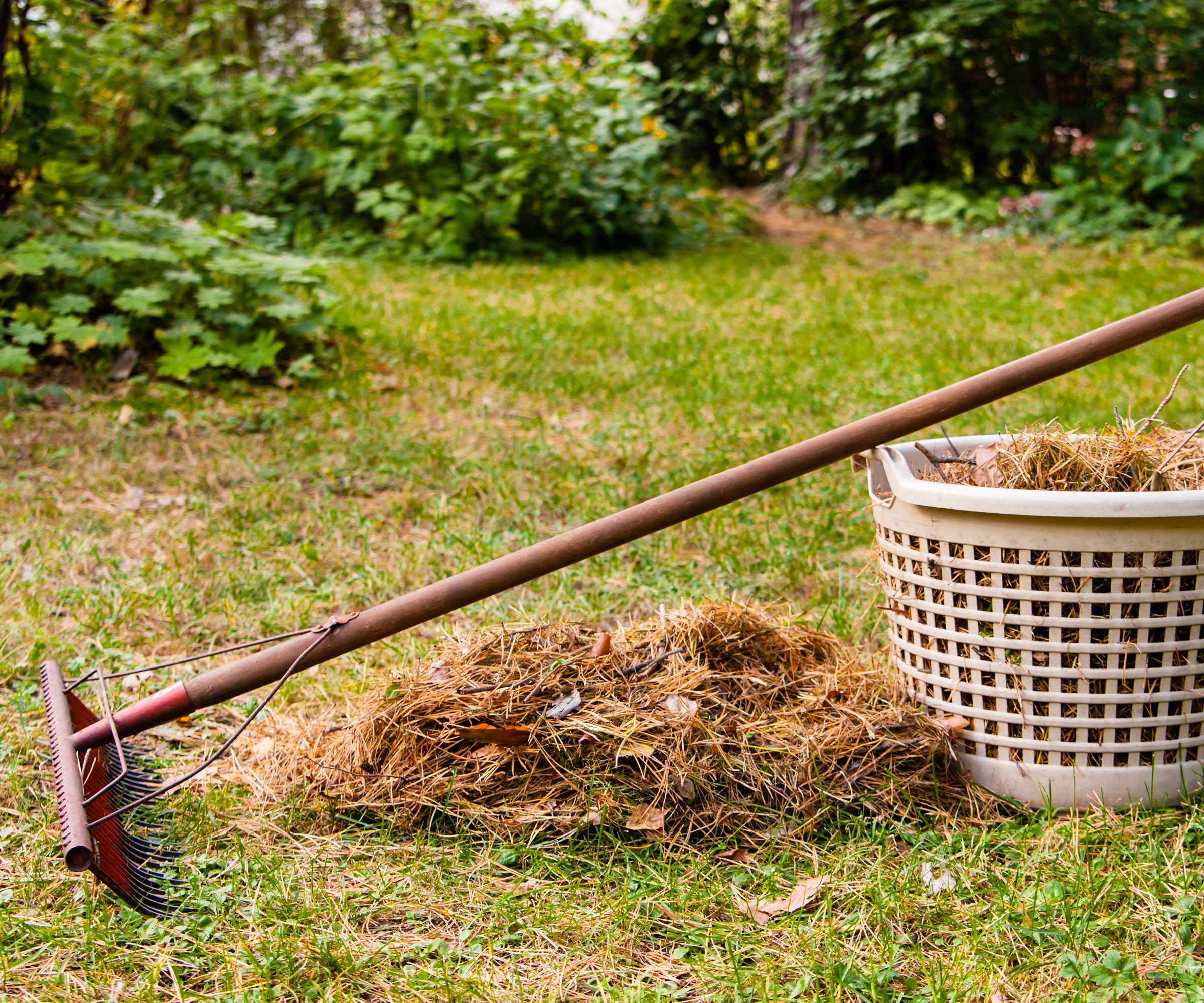
Dethatching removes material that can retain moisture and help the fungus develop
How to treat snow mold on grass
If you do spot the tell-tale signs of snow mold come spring when the snow thaws and you start thinking about cutting the lawn again, there is a simple approach you can take to help combat the issue.
‘To get rid of snow mold, wait until the snow has melted, and the ground has thawed and dried, and lightly rake the affected areas,' says Mark Marino. ‘This will help separate the grass blades, stand them up taller, and promote more air circulation which is vital to curing.’
Any damaged areas should also be reseeded, after the snow mold issue has been treated. Planting grass seed will promote the growth of replacement healthy grass to fill in the bare patches.

Mark Marino is the owner and operator for Lawn Phix in the state of Massachusetts and he sees plenty of snow and snow mold. He is passionate about nurturing soil health and optimizing turf nutrition, creating an ideal environment for grass to thrive
FAQs
Will snow mold go away on its own?
Snow mold should start to go away as the temperatures rise and the soil dries out. Regular lawn care habits such as proper fertilizing and regular mowing will help get rid of the fungus, which dies once warmer temperatures arise. Raking out the sections with a spring tine rake, available at Amazon and at many other retailers, and mowing to shorten the grass can help get rid of snow mold quicker.
When you start mowing the lawn again in spring, don't cut it too short. Choosing a high mower height in spring avoids unnecessarily weakening the grass at this early time of year, which can encourage weeds and lawn moss to take hold and get established.
Sign up to the Homes & Gardens newsletter
Design expertise in your inbox – from inspiring decorating ideas and beautiful celebrity homes to practical gardening advice and shopping round-ups.

Drew’s passion for gardening started with growing vegetables and salad in raised beds in a small urban terrace garden. He has worked as a professional gardener in historic gardens and specialises in growing vegetables, fruit, herbs, and cut flowers as a kitchen gardener. That passion for growing extends to being an allotmenteer, garden blogger, and producing how-to gardening guides for websites. Drew was shortlisted for the New Talent of the Year award at the 2023 Garden Media Guild Awards.
-
 5 times you should never paint a room gray – no matter how timeless you think this shade is
5 times you should never paint a room gray – no matter how timeless you think this shade isIt might be dubbed a classic neutral, but gray isn't the right choice for every room
By Sophia Pouget de St Victor
-
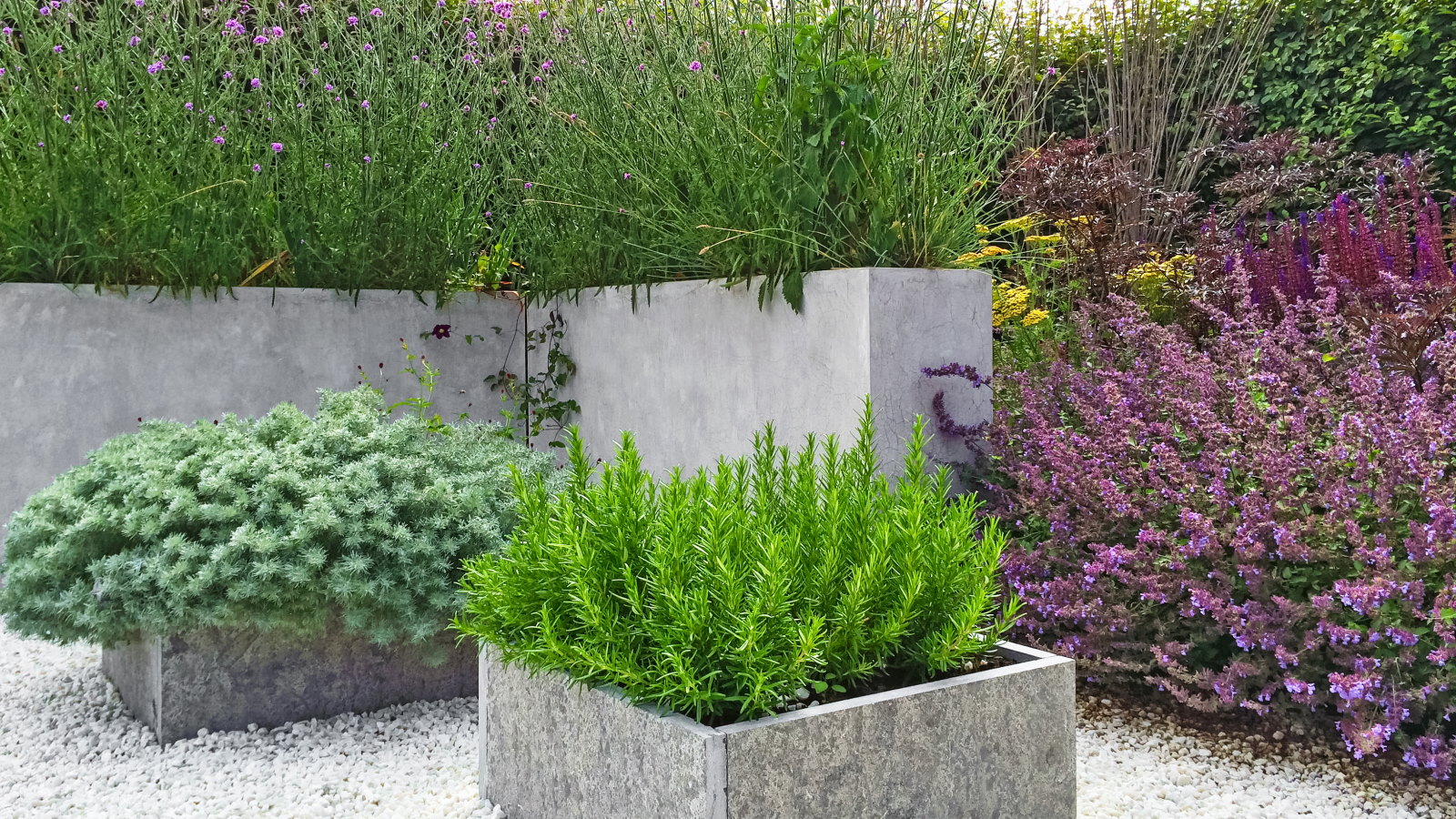 These 7 plants will excel and be pest-free next to rosemary – discover the best companion plants, plus what to keep away
These 7 plants will excel and be pest-free next to rosemary – discover the best companion plants, plus what to keep awayRosemary companion planting keeps plants thriving, deters pests, and can even improve the taste of some crops
By Drew Swainston